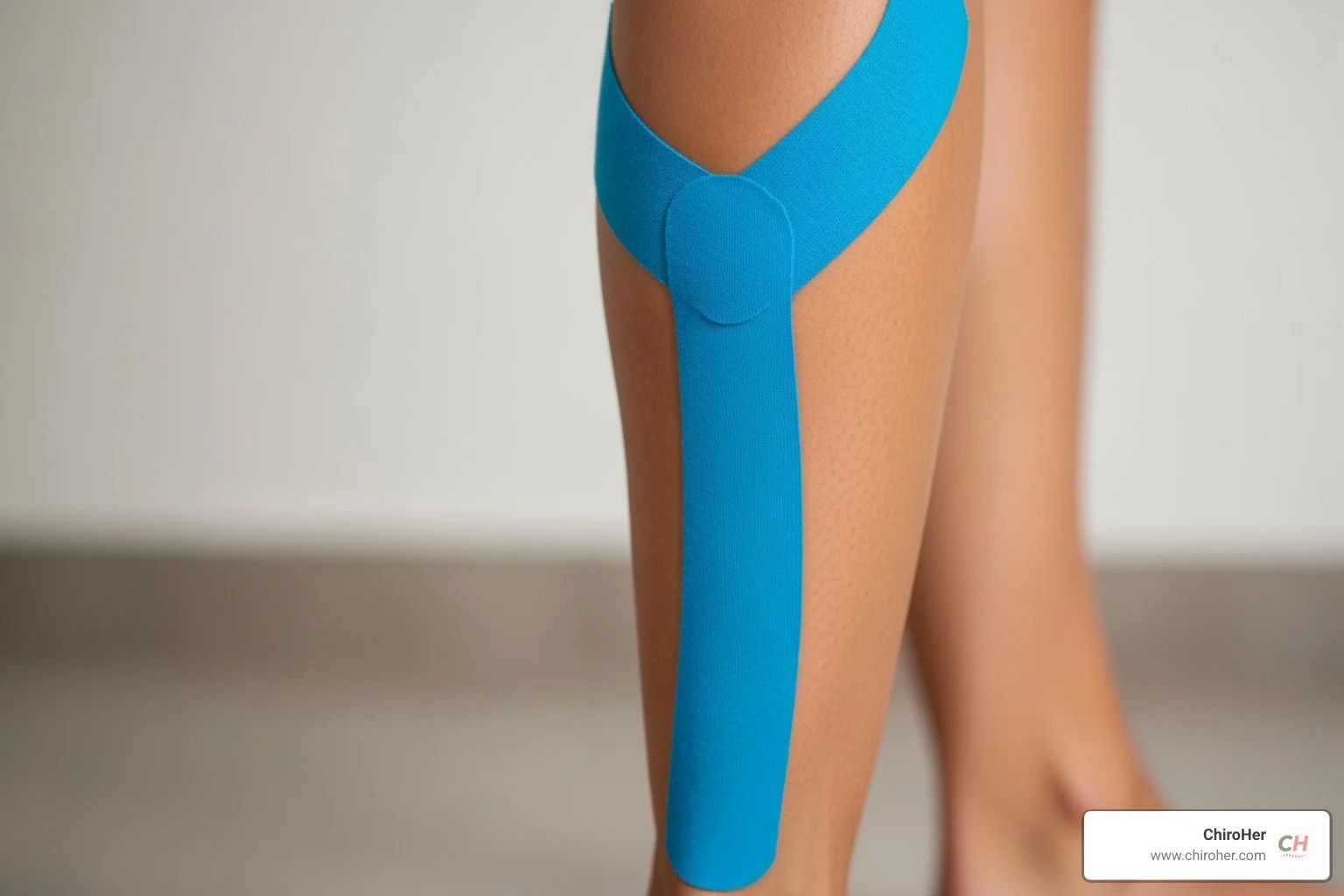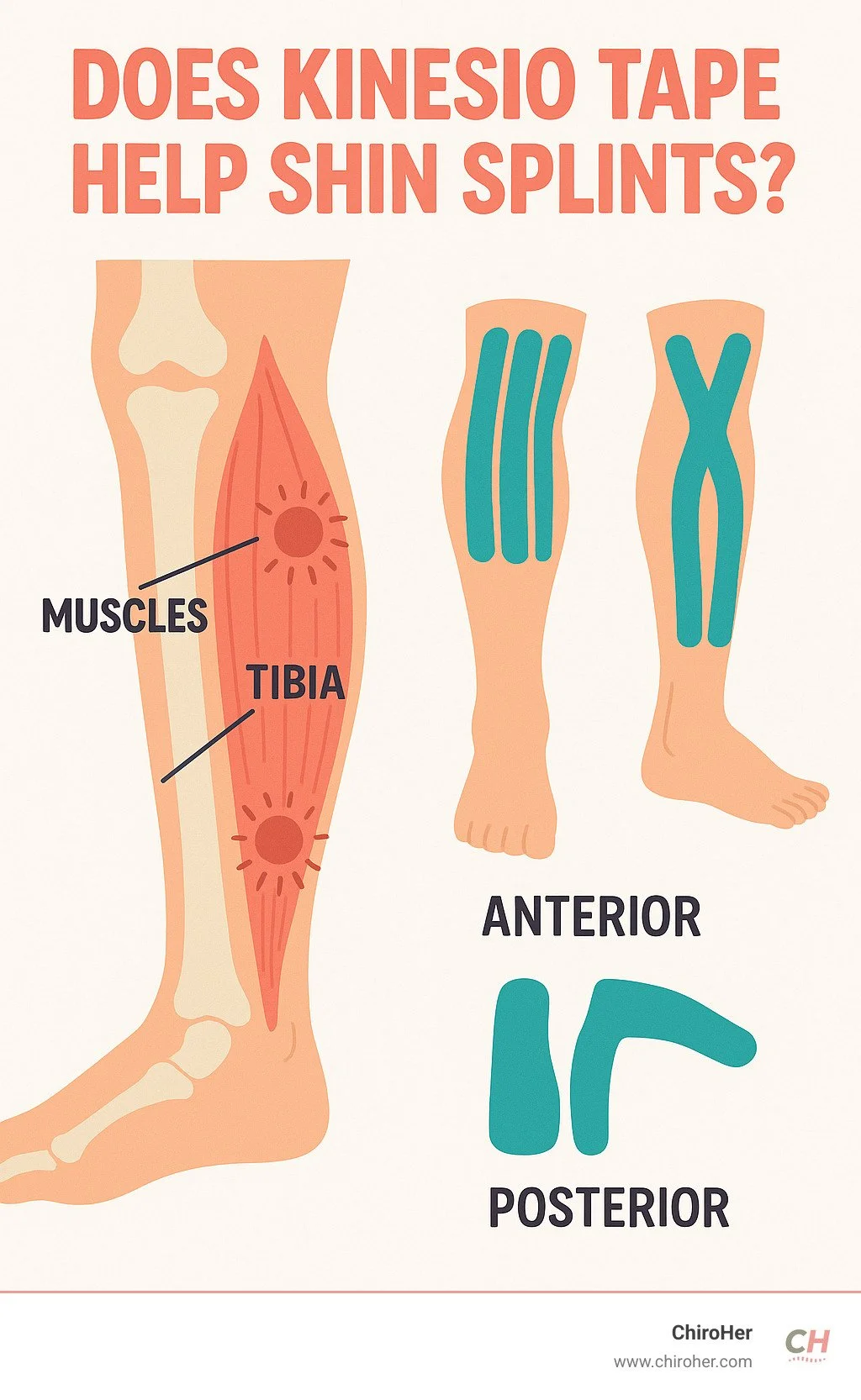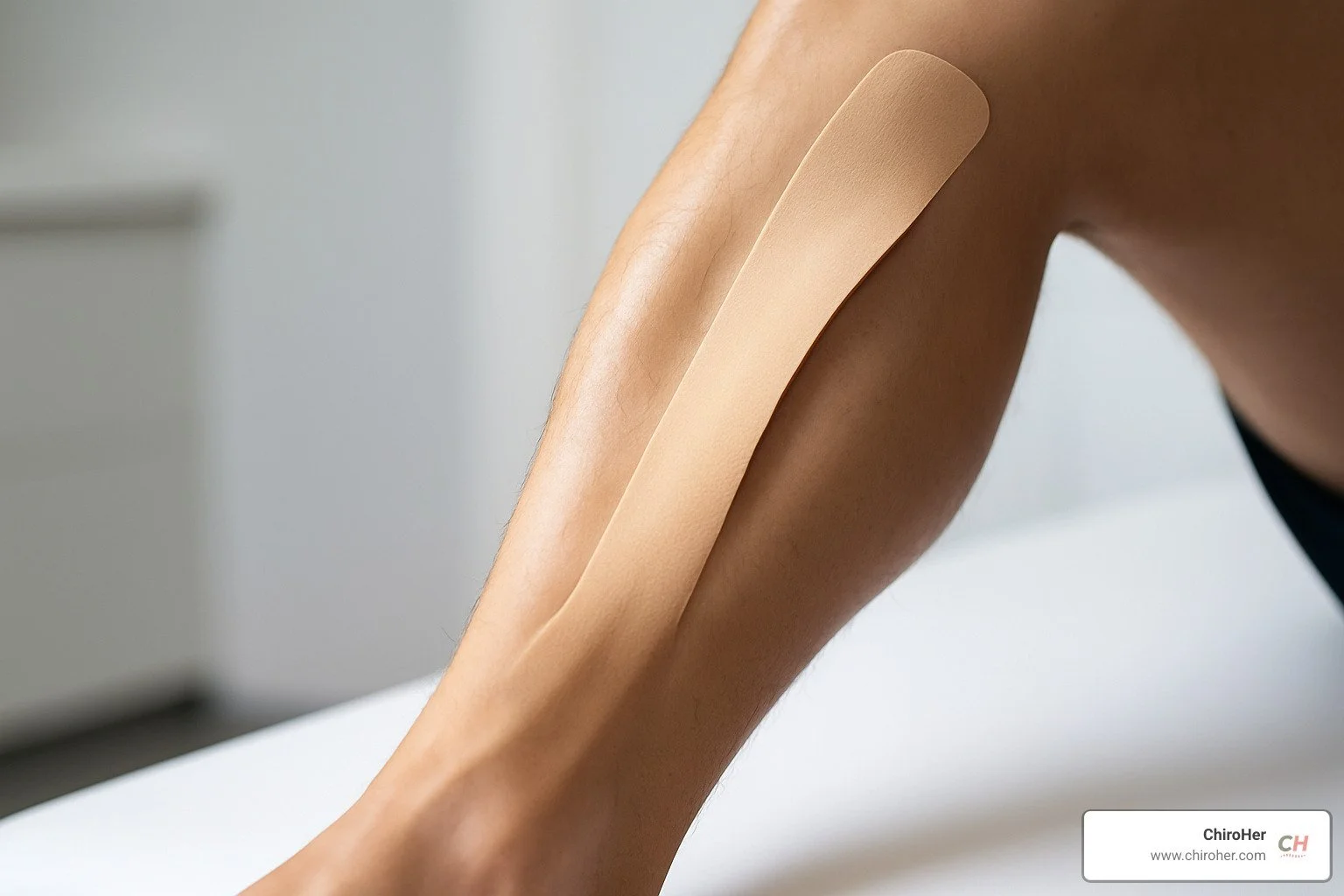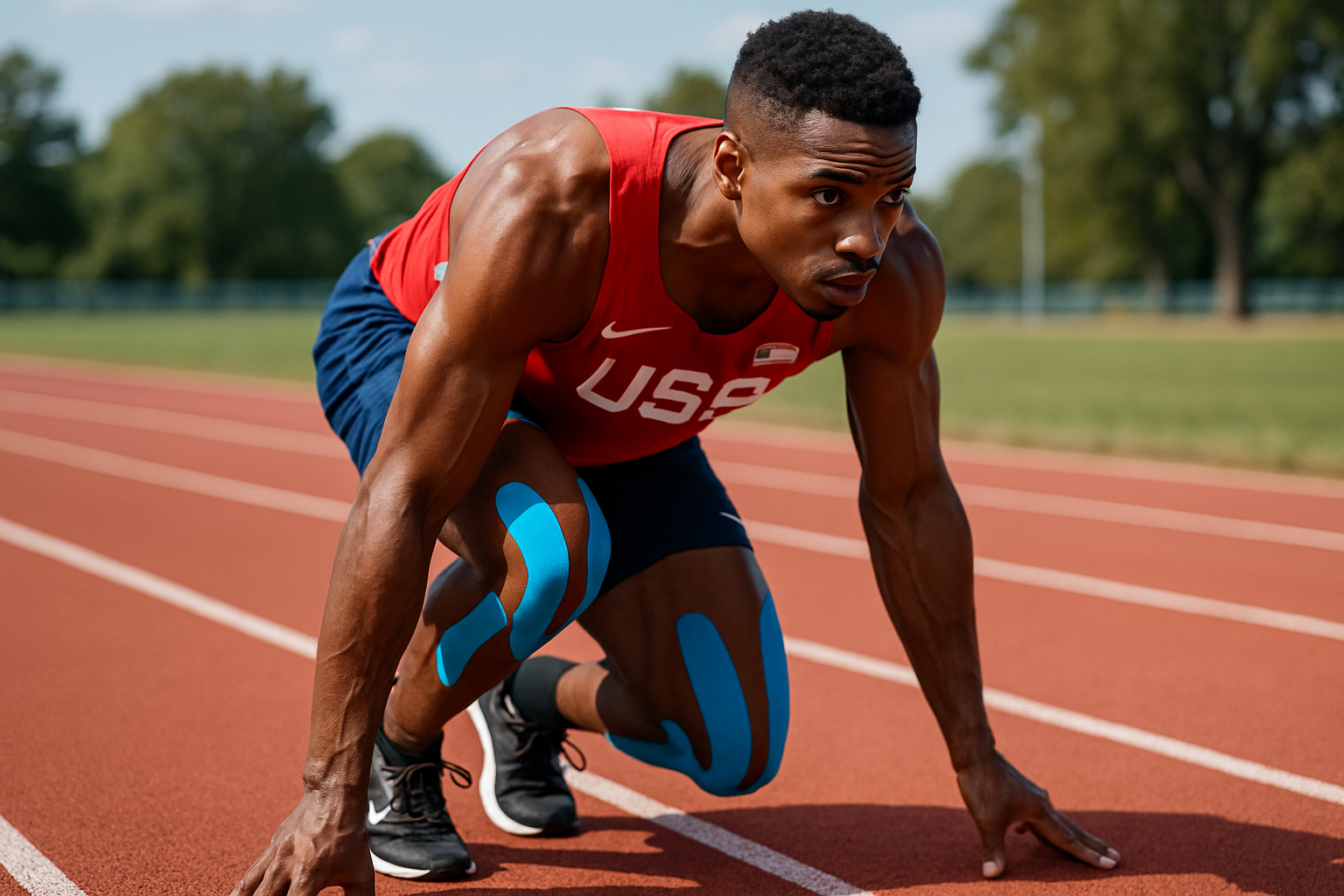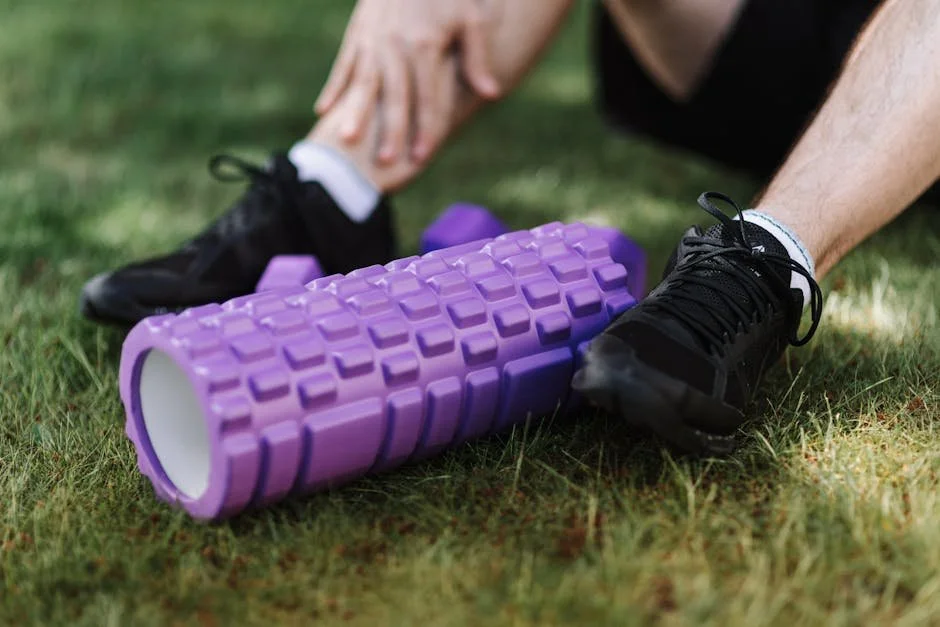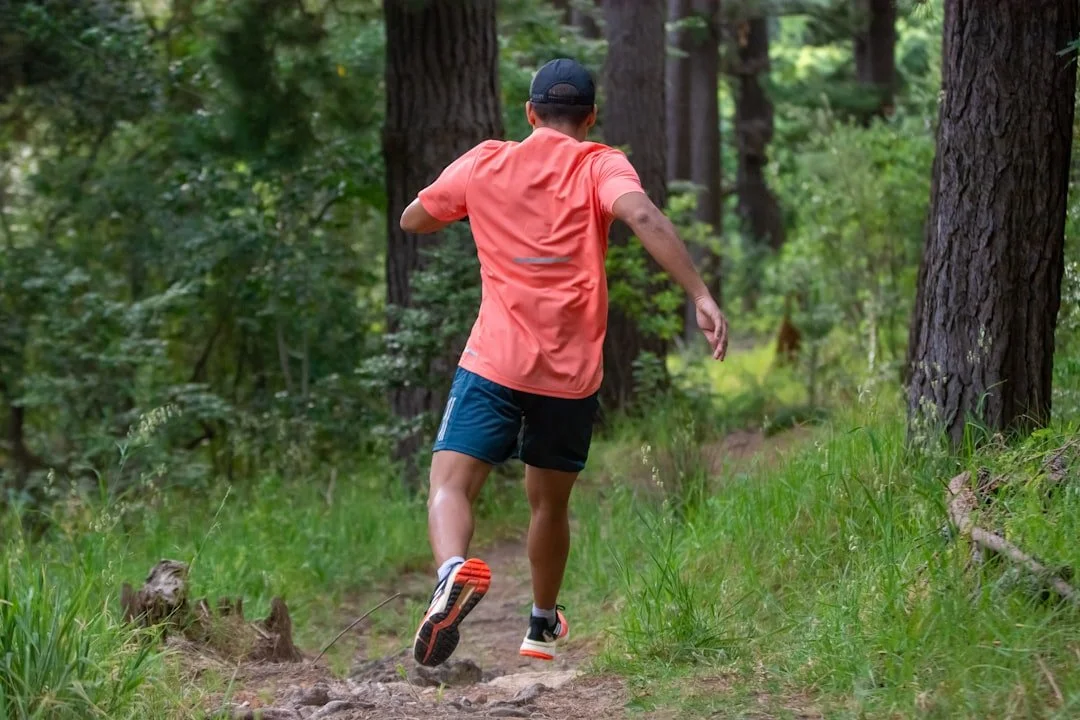Does Kinesio Tape Help Shin Splints? Here's the Sticky Truth
Why Runners Are Turning to Kinesio Tape for Shin Pain
Does kinesio tape help shin splints? Current research shows mixed but promising results. A 2018 trial found that participants who wore kinesio tape for one week experienced less pain and better function compared to those using shoe insoles. However, a 2022 systematic review noted that evidence remains limited due to small sample sizes.
Quick Answer Summary:
Pain Relief: Studies show 40-60% reduction in pain scores
Function Improvement: Better hop distance and daily activities
Duration: Effects seen within 1 week of consistent wear
Limitations: Only 4 studies exist with 141 total participants
Best Use: Combined with rest and proper training modifications
Shin splints affect up to 16% of runners, making them one of the most common running injuries. Also known as medial tibial stress syndrome, this condition causes that familiar ache along your shinbone that can sideline your training for weeks.
Kinesiology tape - that colorful stretchy tape you see on athletes - works by lifting the skin slightly to improve blood flow and reduce pressure on painful tissues. The elastic cotton material mimics your skin's natural stretch and can stay on for 2-5 days, even through showers and workouts.
Hi! I'm Dr. Michelle Andrews, founder of ChiroHer in Oklahoma City, and I've helped countless athletes manage shin splints through comprehensive care that includes proper taping techniques. My experience treating sports injuries has shown me that while kinesio tape can provide relief, understanding when and how to use it makes all the difference.
Understanding Shin Splints: What Hurts and Why
When you feel that familiar ache creeping up your shins during a run, you're experiencing medial tibial stress syndrome - though most of us just call it shin splints. Your body is basically waving a red flag, telling you that the muscles, tendons, and bone tissue around your shinbone have had enough.
The pain usually shows up along the inner edge of your tibia (that's your shinbone), though sometimes it hits the front of your leg too. What starts as a nagging discomfort during your workout can turn into a persistent throb that makes walking up stairs feel like a challenge.
Shin splints particularly affect runners with flat feet or high arches, as these foot mechanics create uneven stress. Running on hard surfaces like concrete instead of softer trails sends impact forces straight through your legs with every step.
Signs & Symptoms to Watch
The telltale sign is that dull, aching pain along your inner shin that starts during exercise and often sticks around afterward. You might notice tenderness when you press along the bone, and some people see mild swelling or redness.
What's frustrating about shin splints is how sneaky they can be. The pain often fades as you warm up during your run, making you think you can push through it. Then it comes back with a vengeance once you stop moving.
Watch for these early warning signs: sharp pain at the start of your workout that gradually gets better, increased sensitivity when touching your shin, and activity-related pain that returns after you finish exercising.
Root Causes You Can Control
Many factors that cause shin splints are within your control. Training errors top the list - things like bumping up your weekly mileage by more than 10%, suddenly adding hill workouts, or jumping into high-intensity training without building up slowly.
Your shoes matter more than you might think. Worn-out footwear that's lost its cushioning, or shoes that don't match your foot type, can mess with your running form. Replace your running shoes every 300-500 miles or every few months if you're a regular runner.
Surface changes also matter. If you usually run on soft trails and suddenly switch to concrete sidewalks, your legs need time to adapt to those harder impact forces.
Muscle imbalances between your calf muscles and the muscles in front of your shin create biomechanical issues that set you up for injury. Weak hip muscles can also contribute by letting your leg rotate inward too much when you run. More info about therapeutic exercises can help you address these imbalances.
How Kinesiology Tape Works on the Lower Leg
Think of kinesiology tape as a gentle helping hand for your injured shin. Made from elastic cotton material that stretches and moves just like your skin, this colorful tape creates a gentle lifting effect on your skin, giving your tissues breathing room.
When the tape lifts your skin slightly, it improves circulation by creating more space for blood and lymphatic fluid to flow. Better flow means your body can more effectively remove inflammatory waste products that build up in injured tissues.
The tape also gives your brain better information about what's happening in your leg through proprioception. This improved body awareness can help you move more efficiently and avoid repetitive stress patterns that contribute to shin splints.
Unlike rigid athletic tape that locks everything in place, kinesiology tape moves with you while providing support. You can run, walk, and go about daily activities while getting therapeutic benefits. More info about KT Tape work explains these mechanisms in greater detail.
There's also the pain gate theory at work - the gentle stimulation from the tape can help block pain signals from reaching your brain.
The Science Behind the Stretch
The adhesive uses a wave pattern that lets your skin breathe while sticking securely. Most therapeutic applications work best with 10-15% stretch applied to the tape. This creates just enough lift to help circulation without cutting off blood flow.
Quality kinesiology tape is waterproof and designed to stay put for 2-5 days. You can shower, exercise, and sleep with it on. Just pat it dry after getting wet.
Potential Perks & Pitfalls
Many people experience immediate pain relief when kinesiology tape is applied correctly. The support and improved body awareness can make you feel more confident during activities.
But kinesiology tape isn't perfect. Some people develop skin irritation, especially those with sensitive skin. The ongoing cost of replacing tape every few days can add up.
The biggest challenge? Proper application technique. Getting the tension and placement right often takes practice or professional instruction. Poorly applied tape might provide little benefit or even cause problems like skin pulling.
Does Kinesio Tape Help Shin Splints? The Evidence So Far
When patients ask me whether does kinesio tape help shin splints, I share what the research tells us - the answer is encouraging, though we're still building the evidence base. The studies we do have show consistent positive results, even if they're limited in scope.
The strongest evidence comes from a 2018 study that followed 40 people with shin splints for one week. Half used kinesiology tape daily, while the other half relied on shoe insoles. The tape group came out ahead on both pain relief and functional improvement.
A 2022 review gathered all available studies on kinesiology taping for shin splints. They found just four studies with 141 total participants - not huge, but enough to spot patterns. The scientific research on kinesiology tape review noted that while study quality ranged from poor to moderate, results consistently favored kinesiology tape.
Scientific Findings: Pain Relief and Function Gains
The question does kinesio tape help shin splints gets a clearer answer when we look at specific outcomes. In the 2018 study, people using kinesiology tape saw meaningful drops in their pain scores after just one week.
But pain relief was just part of the story. The tape users also performed better on functional tests, particularly hop distance measurements. This suggests the tape wasn't just masking pain - it was helping people move better.
The comparison between kinesiology tape and standard orthotics proved particularly interesting. The scientific research on KT vs orthotics showed that tape users experienced superior outcomes in both comfort and function.
Several studies also noted improvements in proprioception - people's awareness of where their legs were in space. This improved body awareness may help explain why taped participants moved more confidently.
Limitations and Risks to Keep in Mind
Despite positive findings, I always discuss limitations when patients ask does kinesio tape help shin splints. The biggest issue is that we don't have enough research yet. With only 141 people studied across all available research, we're drawing conclusions from a relatively small group.
The studies also followed people for short periods - typically one to two weeks. We don't know if positive effects continue with longer use or fade over time.
The placebo effect presents another consideration. When you're wearing bright tape on your legs, you know you're getting treatment. This visible reminder might contribute to feeling better beyond any physical benefits.
Skin reactions affect some people, ranging from mild redness to more significant irritation. Improper application can also cause problems - too little tension provides minimal benefit, while too much can restrict circulation.
Step-by-Step Taping Techniques for Anterior and Posterior Shin Splints
Getting your taping technique right can make or break your results. Start with clean, dry skin that's completely free of lotions, oils, or sweat. If you're particularly hairy, consider shaving the area the night before.
Gather your supplies: quality kinesiology tape, scissors with rounded tips, and a comfortable workspace. Cut your tape strips with rounded corners to prevent early peels.
The key to successful application lies in your anchor points - the areas at each end of your tape strip that you apply without any stretch. Most shin splint applications require strips that run from about 2 inches below your big toe to just below the outside of your knee.
Anterior Technique: I-Strip Bridge
For anterior shin splints that hit the front of your leg, the I-strip bridge technique targets your tibialis anterior muscle.
Measure and cut your tape strip about 3 inches shorter than the distance from your big toe to just below your knee.
Apply your first anchor just below the outside of your knee with zero stretch. Press this 2-inch section firmly and rub it well to activate the adhesive.
Flex your foot upward and apply gentle stretch (about 10-15%) to the remaining tape as you smooth it down the front of your shin. The tape should follow the natural line of your tibialis anterior muscle.
Finish by applying the final 2 inches of tape to the top of your foot without any stretch. Give the entire length a gentle rub to ensure good adhesion. More info about Kinesio Tape basics can help you master these fundamentals.
Posterior/Medial Technique: Y-Strip Jigging
For posterior or medial shin splints, the Y-strip jigging technique offers targeted support for your tibialis posterior muscle. This method uses higher tension in specific areas to provide focused relief.
Create your Y-shaped strip by cutting the tape so the main tail measures about 8 inches, with each arm of the Y measuring 4-6 inches.
Anchor the tail at your ankle with no stretch, then follow the path of your tibialis posterior muscle up the inside of your leg. Apply approximately 40% stretch in the area of maximum pain, creating a gentle wave pattern.
The two arms of the Y wrap around your calf muscle using minimal stretch. Make sure those ends are applied without any stretch to prevent premature peeling.
Wear Time, Showering & Removal Tips
Quality kinesiology tape becomes your temporary second skin for 2-5 days when applied correctly. The waterproof adhesive means you can shower normally - just pat the taped area dry afterward.
You can exercise with the tape on. The tape should feel comfortable during movement and never restrict your natural range of motion. If you experience discomfort, itching, or skin irritation, remove the tape immediately.
When removal time comes, use baby oil or adhesive remover to dissolve the adhesive gently. Peel the tape slowly in the direction of hair growth. Watch for signs of skin irritation including redness, itching, or raised bumps.
Beyond Tape: Comprehensive Care and Prevention
While kinesiology tape can provide valuable support for shin splints, it works best as part of a complete treatment approach. Think of tape as one tool in your recovery toolkit, not a magic solution.
Rest remains your most powerful healing tool. Pushing through significant pain often leads to stress fractures and months of forced downtime. Your body needs time to repair inflamed tissues.
When ready to return to activity, gradual progression is key. Start with short, easy runs and increase weekly mileage by no more than 10% each week.
Strengthening your calf muscles helps address root causes of shin splints. Simple exercises like calf raises, toe walks, and resistance band work can make a huge difference in preventing future episodes.
Proper footwear often provides more relief than people expect. Worn-out running shoes lose their shock-absorbing properties. Replace shoes every 300-500 miles, and consider visiting a specialty running store for gait analysis.
Orthotics may help if you have significant foot mechanics issues like flat feet or high arches. Both custom and over-the-counter arch supports can improve how your foot hits the ground.
Compression sleeves offer an alternative to taping. While they don't provide the same targeted support as kinesiology tape, they improve circulation and give general support during activities. They're also easier to put on and more cost-effective over time.
Ice application for 10-15 minutes after exercise helps control inflammation and pain. Many patients find alternating between ice and heat therapy particularly helpful.
Cross-training keeps you active while your shins heal. Swimming, cycling, and elliptical training maintain cardiovascular fitness without repetitive impact that aggravates shin splints.
The truth is, does kinesio tape help shin splints? Yes, but it works best when combined with these other proven strategies. More info about chiropractor sports injuries explains how professional care can complement these self-treatment approaches.
When to Seek Professional Help
Sometimes your body sends clear signals that home treatment isn't enough. If you've been dealing with shin pain for more than 2 weeks despite rest and proper self-care, it's time to get a professional opinion.
Watch for warning signs that demand immediate attention. Significant swelling, redness, or heat in your shin area could indicate a more serious condition. Severe pain that interferes with walking or daily activities is another red flag.
Suspected stress fractures represent a true emergency. Sharp, localized pain that gets worse with activity and doesn't improve with rest could mean your bone is actually cracking. Don't ignore numbness, tingling, or weakness in your foot or toes.
A gait assessment by a qualified professional can be incredibly valuable, even if your symptoms aren't severe. Many runners develop shin splints because of subtle biomechanical issues that are hard to identify without trained eyes.
How a Chiropractor or PT Can Assist
Manual therapy techniques can work wonders for stubborn shin splints. We use hands-on approaches to address muscle tension, joint restrictions, and fascial adhesions that contribute to your pain.
Corrective exercise programs target the specific muscle imbalances and movement problems we find during your assessment. These aren't generic exercises - they're custom to address your unique issues.
Gait retraining helps you develop more efficient movement patterns that reduce stress on your shins. This process often involves video analysis so you can see what's happening with your running form.
Custom taping applications by trained professionals often provide much better results than trying to tape yourself. We can assess your specific needs and apply tape with optimal tension and placement.
At ChiroHer, we take a comprehensive approach to sports injuries, combining manual therapy, corrective exercises, and proper taping techniques to help athletes recover quickly and prevent future problems. More info about chiropractor vs massage explains how different treatment approaches work together for optimal results.
Frequently Asked Questions about Kinesio Tape & Shin Splints
Can I keep running with the tape on?
Yes, you can continue running while wearing kinesiology tape - that's one of its biggest advantages. The waterproof design stays put through sweaty workouts and post-run showers.
However, just because you can run doesn't mean you should ignore what your body is telling you. The tape supports your recovery, not mask serious pain that needs rest.
When you first start using tape for shin splints, I recommend cutting your training volume in half. As your symptoms improve over the following weeks, you can gradually increase your mileage by about 10% each week.
How long should each application stay?
Most quality kinesiology tape will stay put for 2-5 days when applied correctly. The exact timing depends on how much you sweat, your skin type, and whether you're training in humid conditions.
Very active runners might find their tape starts losing adhesion after 2-3 days. That's normal - just remove and reapply fresh tape.
You'll know it's time to replace the tape when the edges start peeling up, it loses its stretchy feel, or if you notice any skin irritation developing.
Who should avoid kinesiology tape?
People with inflammatory skin conditions like eczema or psoriasis may find that tape makes their symptoms worse. If you have known allergies to adhesives, test a small patch of skin first.
Diabetics with poor circulation or neuropathy should check with their healthcare provider before using any adhesive products. Pregnant women can generally use kinesiology tape safely, but certain techniques should be avoided.
At ChiroHer, we always assess each patient's individual situation before recommending kinesiology tape. What works well for one person might not be the best choice for another.
Wrap-Up and Next Steps
After examining the research and clinical experience, does kinesio tape help shin splints? The answer is a cautious yes, but with important caveats. The evidence shows promising results for pain relief and improved function, though we're still building a solid research foundation.
What we know for certain is that kinesiology tape can reduce pain scores by 40-60% within just one week of consistent use. The functional improvements are equally encouraging, with people reporting better hop distance and less pain during daily activities.
The real success stories I've seen at ChiroHer happen when patients view kinesiology tape as part of a bigger picture, not a standalone solution. The tape works best when you're also addressing training errors, upgrading worn-out shoes, and strengthening weak muscles.
Think of kinesiology tape as a supportive teammate rather than the star player. It can help you feel more confident during your return to activity and provide pain relief while your body heals, but it can't fix poor training habits or biomechanical issues on its own.
If you've been struggling with shin splints for more than two weeks despite rest and proper self-care, it's time to seek professional help. At ChiroHer, we regularly help athletes throughout Oklahoma City, Yukon, Edmond, Nichols Hills, Del City, Mustang, and Moore overcome stubborn shin splints through comprehensive assessment and treatment.
Our approach combines expert taping techniques with manual therapy, corrective exercises, and gait analysis to address the root causes of your pain. We don't just want to get you back to running - we want to help you run stronger and smarter to prevent future injuries.
Prevention remains your best strategy. Gradual training progression, proper footwear, smart surface choices, and addressing muscle imbalances can keep you running pain-free for years to come. When shin splints do occur, early intervention with techniques like proper kinesiology taping can help you recover faster and more completely.
Whether you're training for your first 5K or your tenth marathon, don't let shin splints derail your goals. With the right combination of treatments and professional guidance when needed, you can get back to doing what you love most - running.

